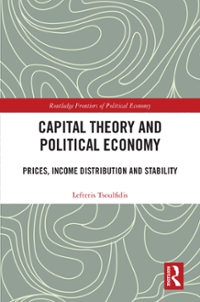Question
In an experiment run by researchers recently, subjects were randomly given either a mug or a pen, and were told that they owned the item
In an experiment run by researchers recently, subjects were randomly given either a mug or a pen, and were told that they owned the item they were given and could take it home at the end of the experiment.
Then, independently of whether they had a mug or a pen, half of the subjects (Group 1) were told that they would have a 90% probability of being able to exchange their object for the other one at the end of the experiment (with the researcher), and the rest (Group 2) were told that they would have a 10% chance of being able to exchange their object (with the researcher).
Then, subjects filled out a time-consuming survey, the purpose of which was to give subjects time to form an attachment to the item they had.
Finally, subjects were asked whether they want to exchange if given the chance.
a) [5 points] In a neoclassical model (with no reference dependence), approximately what percentage of subjects should want to exchange in Group 1 and Group 2?
[Hint: what percentage of subjects would want to trade in the group endowed with mugs; in the group endowed with pens? Note that mugs could be valued much higher on average than pens, or vice versa.]
(b) [5 points] In a prospect-theory model where the reference point is the status quo, in which group should a larger percentage of subjects want to exchange?
(c) [5 points] In the last step of the experiment, subjects were asked if they wanted to exchange if given the chance.
In Group 1, 56.4% said they would want to exchange, while in Group 2, 22.7% said they would want to do so.
Explain this difference between Group 1 and Group 2 using prospect theory.
What does this tell us about the hypothesis that the reference point is the status quo?
Step by Step Solution
There are 3 Steps involved in it
Step: 1

Get Instant Access to Expert-Tailored Solutions
See step-by-step solutions with expert insights and AI powered tools for academic success
Step: 2

Step: 3

Ace Your Homework with AI
Get the answers you need in no time with our AI-driven, step-by-step assistance
Get Started


